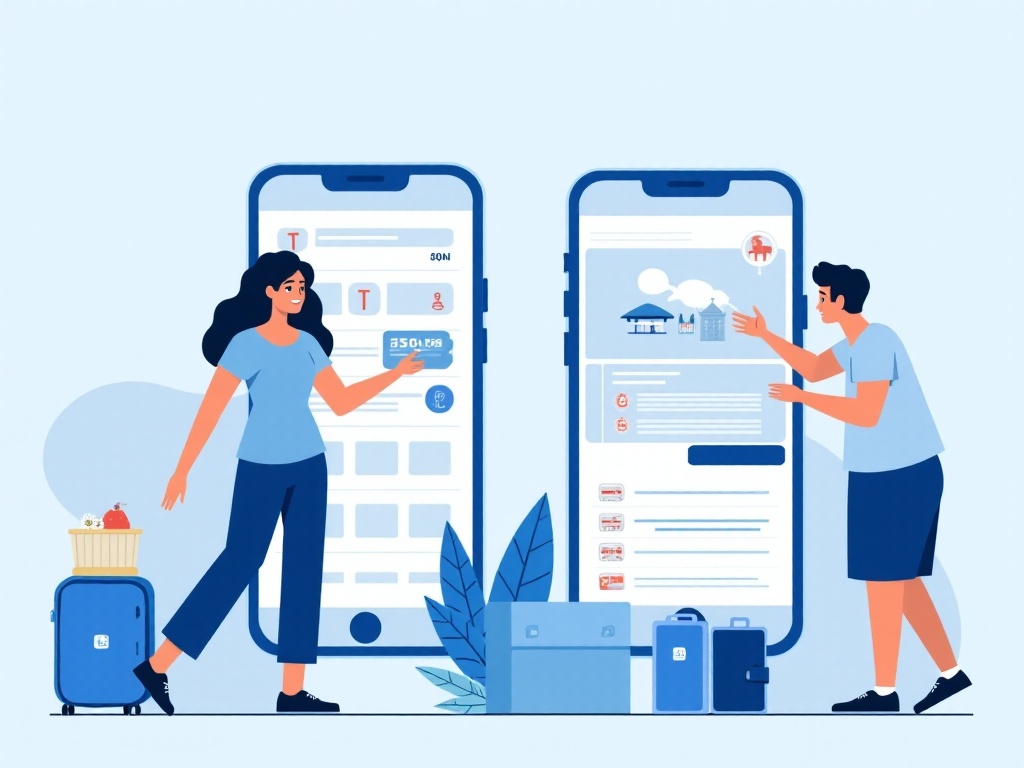Before Departure
As a fresh graduate just starting my career, I desperately wanted to embark on a spontaneous journey! My parents were initially concerned about me traveling alone, but their worries subsided once I showed them my detailed travel plans. Indeed, modern technology has made solo travel incredibly simple – gone are the days of lugging around heavy backpacks stuffed with paper guides and maps.
I was absolutely blown away when I first used PackPoint! This incredibly smart packing checklist was a godsend for an indecisive person like me. It provides detailed recommendations based on your destination – when I traveled to Northern Europe, it reminded me to pack thermal underwear, waterproof jackets, and those easily forgotten essentials like portable clotheslines and band-aids. Best of all, it even suggests appropriate clothing based on local customs, like headscarves for mosque visits or sunscreen for beach destinations. It's truly like having a personal travel butler!
When it comes to itinerary planning, I'm a devoted user of both TripIt and Wanderlog. What I love most about TripIt is its smart recognition feature – just forward your flight and hotel confirmation emails, and boom! A complete itinerary appears, with time zones already calculated. It even reminds you when to check in for flights, eliminating any worry about missing them. As for Wanderlog, it's been incredible for planning trips with my girlfriends! When we planned our Southeast Asia trip, we could discuss the itinerary in real-time. It not only marks each attraction's specific location but also shows distances between sites and suggested visiting times. The best part is how it recommends nearby restaurants and attractions based on your preferences, helping you discover amazing hidden gems.
On the Move
Rome2Rio has been an absolute lifesaver for choosing transportation. During my European adventure, I initially planned to fly directly from Paris to Rome, but Rome2Rio suggested a more cost-effective route: taking the TGV to Nice, then a night train to Rome. While it took longer than flying, I saved a significant amount of money and got to explore the French Riviera as a bonus! The app thoughtfully lists all possible transportation options, including specific departure times, fares, and even highlights particularly scenic routes.
For booking tickets, I love using Omio because it integrates transportation ticketing systems across Europe. Booking international train tickets used to be such a hassle, requiring visits to multiple national websites, but now Omio handles everything in one place, even accepting Alipay! For flights, though, I prefer Skyscanner. I once found a London to Barcelona flight for just over $20! Its price tracking feature is particularly useful – you can set price alerts and grab tickets when they hit your target price.
Unexpected situations often arise while traveling, like flight delays or cancellations. That's when real-time app notifications become crucial. I remember during a layover, TripIt alerted me to a two-hour delay, allowing me to quickly adjust my subsequent plans and avoid unnecessary hassles. It even explains the reasons for delays, which helps put your mind at ease.

Making the Most of It
Accommodation is a top concern for every traveler. I typically choose between Airbnb and Booking.com. Honestly, each platform has its strengths. Airbnb's greatest appeal is its ability to provide authentic local experiences. I once stayed in a small cottage in a Tuscan vineyard, where my hosts, an adorable elderly Italian couple, brought fresh bread and homemade wine every morning. Sitting on the terrace at night, gazing at the stars and listening to cicadas – that feeling is simply indescribable.
However, for short stays in major cities, I prefer hotels on Booking.com. Its powerful filtering system lets you sort by location, amenities, ratings, and more, and their "Daily Deals" can save you quite a bit. I particularly appreciate their "Genius" membership program – the more you book, the better the discounts, sometimes up to 15% extra off.
For local experiences, Viator is my go-to. Their carefully vetted experiences are consistently high-quality. I took a kimono experience class in Kyoto where I not only learned how to wear one properly but also discovered fascinating cultural insights. The best part? After class, the teacher took us to a hidden shrine known only to locals, with the most stunning maple leaves you could imagine!
Culture Trip is my secret weapon for discovering off-the-beaten-path spots. Rather than just listing popular attractions, it delves deep into local culture. In Istanbul, it led me to a traditional hammam hidden in the backstreets – affordable and authentic. Plus, their articles are engaging, often revealing lesser-known historical tales and cultural insights.

Helpful Tips
Google Maps is absolutely essential in my toolkit. Beyond precise navigation, it shows real-time traffic and public transit information. In complex subway systems, it clearly indicates which exit to use and which direction to head. Best of all, you can download offline maps – I relied on this feature to navigate Venice's maze-like alleys and discover hidden eateries in the depths of the city.
Language barriers worry many travelers, but Google Translate eliminates this concern. Its instant conversation translation feature is a lifesaver, especially in countries where English isn't widely spoken. I used it frequently in Korea, not just for reading signs and menus but also for basic conversations with locals. The voice translation feature proves particularly useful when taking taxis or asking for directions.
I was particularly impressed by its handwriting recognition feature – you can write characters directly on your screen for translation. The offline translation packages are also invaluable for basic communication without internet access.
For managing finances, XE Currency is incredibly reliable. It provides real-time currency exchange rates and tracks historical trends to help you find the best time to exchange money. I love its favorites feature, which lets you keep frequently used currencies on the homepage for quick reference.
Splitwise is essential when traveling with friends. It tracks everyone's expenses and calculates the most efficient settlement plan. For instance, if A owes B and B owes C, it determines the simplest transfer method to avoid multiple transactions. It supports multiple currencies, eliminating the confusion of international travel expenses.
Travel inevitably involves unexpected situations, and these apps prove invaluable in such moments. Once while driving in Iceland, I encountered a sudden snowstorm but avoided danger by checking road conditions through a local weather app. Another time in Thailand, when my planned island destination closed due to weather, Booking.com's customer service quickly helped rearrange my itinerary.
Honestly, looking back, these apps have made traveling so much easier. They're like having a personal assistant solving various problems for you. With these tools, solo travel becomes effortless and comfortable. Most importantly, they free up time and energy to truly enjoy your journey and discover unexpected delights.
So if you're considering a spontaneous adventure, don't hesitate – these apps will definitely make your journey smoother and more enjoyable. After all, isn't travel all about discovering the unexpected wonders along the way?


